Citrine
An interesting yellow / orange Quartz which is generally sold in either its crystalline natural form, or as a polished stone. It is very popular with those who believe in crystal healing.
Due to the rarity of the natural gemstone, a large amount of the stones sold online and in stores are actually heat treated Amethyst, which does look similar, but has slightly different shapes and tones. We sell both and try to make it clear when something is natural or ‘unnatural’ – more on that below.
Showing all 5 results
-
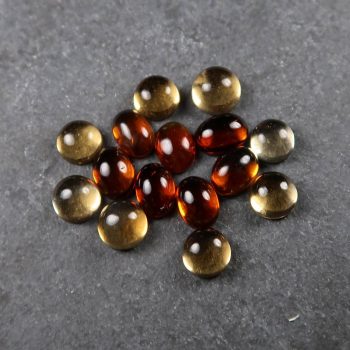
Citrine Cabochons
£3.00 – £10.00 -
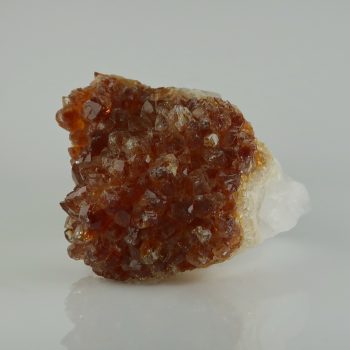
Citrine druzy specimens (Heat treated Amethyst)
£5.00 – £6.00 -
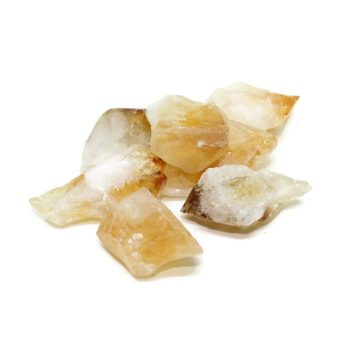
Citrine Points (Heat Treated)
£3.00 – £5.00 -
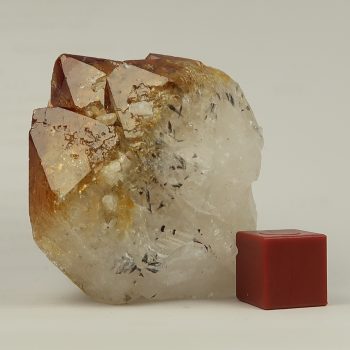
Citrine Points with Goethite (Heat Treated)
£10.00 -
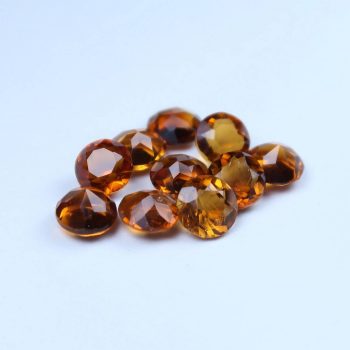
Citrine, Faceted
£1.50 – £15.00
Appearance, Uses and History
The term Citrine comes from the latin word citrina, meaning yellow. This is also the source of the word citron, and the source of the word citrus too.
The majority of all Citrine on the market today is what we would call ‘heat treated Amethyst’, although many people would call it ‘cooked Amethyst’ or ‘fake’.
Most commercial Citrine is heat treated Amethyst or Smoky Quartz, which can change colour when heated or irradiated. Citrine is not coloured by a coating or any surface iron staining, and frankly it is a little difficult to give a straight answer as to the cause of the colouring.
Mindat has a decent section on the colouring, suggesting it is aluminium based or iron based.
The large Brazilian geodes with the very dark black backs are heat treated – the black backs are actually coated with cement and then painted.
I think realistically its best to consider that there may be a few ‘types’ of Citrine to consider before making a purchase.
- Natural untreated Citrine
- Natural Citrine which has been treated
- Natural Amethyst/Smoky Quartz which has been treated
- Synthetic lab grown Citrine, as in hydrothermal Amethyst/Quartz
- Imitations – non SiO2 imitations such as glass
- Iron stained Quartz
- Coated Quartz
The first known use of Citrine in jewellery was somewhere between 300 and 150BC in Greece. The term yellow Quartz was replaced by ‘Citrine’ sometime in the medieval period.
Darker colours of Citrine are more desirable – sometimes known as madeira Citrine. However, this material is now incredibly rare and most darker Citrine is heat treated Amethyst.
Locales
Natural Citrine is uncommon, with most material coming from Brazil – specifically Rio Grande do Sul and Minas Gerais.
Other locales include Bolivia, the DR Congo, Madagascar, Russia, the USA, and Zambia.
Mineralogy
Hazards and Warnings
Almost all rocks, minerals (and, frankly, almost all other substances on earth) can produce toxic dust when cutting, which can cause serious respiratory conditions including silicosis.
When cutting or polishing rocks, minerals, shells, etc, all work should be done wet to minimise the dust, and a suitable respirator or extraction system should be used.
Translations
Arabic:
- السترين
Hindi:
- सिट्रीन
Portuguese:
- citrino
Bengali:
- সাইট্রিন
Indonesian:
Punjabi:
- ਸਿਟਰੀਨ
English:
- citrine
Italian:
- citrino
Russian:
- цитрин
French:
Japanese:
- シトリン
Spanish:
- citrino
German:
- zitrin
Korean:
Thai:
- ซิทริน
Gujurati:
- સાઇટ્રિન
Mandarin and Traditional Chinese:
- 黃水晶
Urdu:
